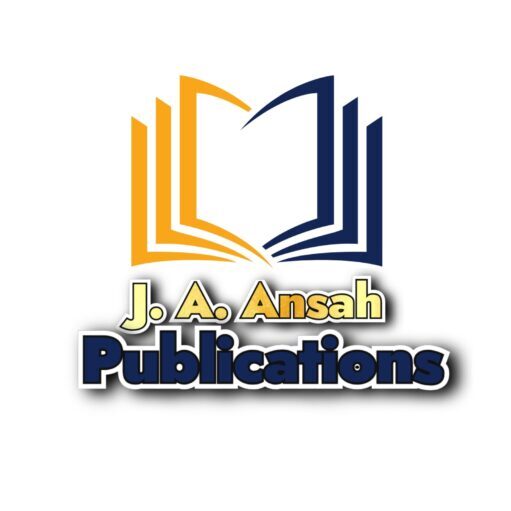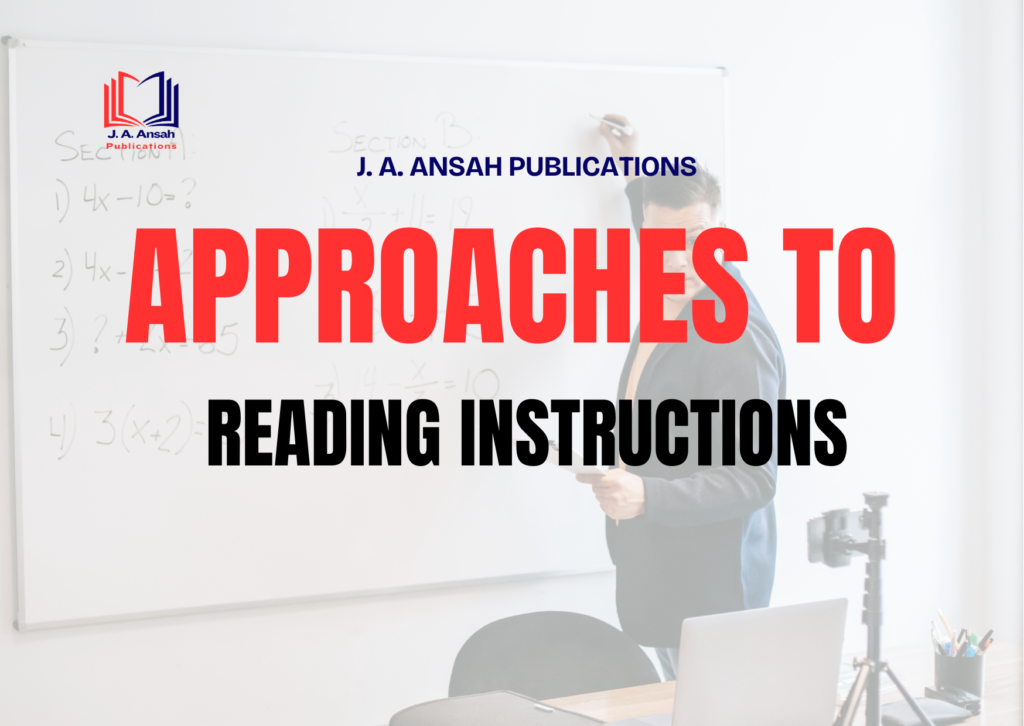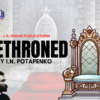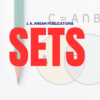BY J. A. ANSAH
APPROACHES TO READING INSTRUCTION
Reading instruction is a vital component of education, aiming to develop students’ reading skills and comprehension. Various approaches to reading instruction have emerged, each emphasising different aspects of the reading process. Here are some of the most prominent approaches:
1. Phonics-Based Instruction
Phonics instruction focuses on teaching the relationship between letters and sounds, enabling learners to decode words. This approach often includes systematic phonics instruction, where students learn sound-letter correspondences and apply them to reading.
– Characteristics:
– Emphasis on letter-sound relationships.
– Systematic and explicit teaching of phonics rules.
– Activities such as phonemic awareness training and word decoding exercises.
– Research Evidence:
– Studies indicate that phonics instruction significantly improves reading skills, especially in early readers (National Reading Panel, 2000).
2. Whole Language Approach
The whole language approach promotes reading as a natural process that should be integrated with real-life experiences. This method emphasises meaning, context and the enjoyment of reading rather than focusing solely on phonics and decoding.
– Characteristics:
– Reading is viewed as a holistic process.
– Encourages the use of authentic literature.
– Students engage in reading, writing and speaking activities simultaneously.
– Research Evidence:
– While some studies support the effectiveness of whole language in fostering a love for reading, others question its efficacy in teaching foundational reading skills (Ivey & Fisher, 2016).
3. Balanced Literacy
Balanced literacy combines elements of both phonics and whole language approaches. This method highlights a comprehensive framework for teaching reading that incorporates reading aloud, shared reading, guided reading, independent reading, and phonics instruction.
– Characteristics:
– Integrates direct instruction in phonics with exposure to rich literature.
– Encourages differentiated instruction to meet diverse learner needs.
– Focuses on developing comprehension and fluency alongside decoding skills.
– Research Evidence:
– Research suggests that balanced literacy can effectively improve students’ reading outcomes by providing a well-rounded approach (Fountas & Pinnell, 2017).
4. Interactive Read-Alouds
Interactive read-alouds involve teachers reading texts aloud to students while engaging them in discussions and activities. This approach promotes comprehension, vocabulary development and critical thinking skills.
– Characteristics:
– Teachers model fluent reading and expressiveness.
– Students engage with the text through questioning and discussion.
– Focuses on comprehension strategies and vocabulary building.
– Research Evidence:
– Studies show that interactive read-alouds positively impact learners’ comprehension and engagement in reading (Miller & Veatch, 2015).
5. Content Area Literacy
Content area literacy focuses on reading and writing skills specific to various subject areas, such as science, history and mathematics. This approach prepares students to comprehend and analyse texts within their academic disciplines.
– Characteristics:
– Focuses on reading strategies tailored to specific content areas.
– Encourages critical thinking and analytical skills.
– Integrates reading and writing within the context of subject matter.
– Research Evidence:
– Research highlights the importance of content area literacy in preparing students for academic success (Shanahan & Shanahan, 2008).
6. Collaborative Reading
Collaborative reading involves students working together in small groups to read and analyse texts. This approach fosters social interaction, peer support and cooperative learning.
– Characteristics:
– Encourages dialogue and discussion among peers.
– Students share insights and interpretations of the text.
– Promotes engagement and motivation through collaboration.
– Research Evidence:
– Evidence suggests that collaborative reading enhances comprehension and critical thinking skills (Graham & Perin, 2007).
READING ACTIVITIES
Pre-Reading Activities (Preview)
- The Digital Dialects: How Programming Languages Shape Our Modern World
- The Dark Side of Human Rights: Freedom or a Gateway to Spiritual Corruption?
- The Myth of Meritocracy in Ghana: A Critical Examination
- The Role of the Church in Combating Corruption: The Church Cannot Remain Mute
- Changing the Script: How Applied Behaviour Analysis (ABA) Is Empowering Learners and Transforming Classrooms
- Ministerial Mentorship and Its Importance in Shaping Leaders
- Christianity and Culture: Redemption from Spiritual Slavery
- Understanding the Stages of Child Development: Why Is It Important?
Pre-reading activities aim to activate existing schemata, build new schemata and provide information to the teacher about what the learners know. These activities serve as “devices for bridging the gap between the text’s content and the reader’s schemata”. Various activities and materials can help the teacher introduce key vocabulary and reinforce concept association to activate both formal and content schemata. Formal schemata will be activated by employing devices such as overviews to draw attention to the text structure. The content schemata will be activated by using various pre-reading activities to help learners brainstorm and predict how the information fits into their previous knowledge.
One of the most important pre-reading activities proposed by schematic theorists’ is prediction. Prediction is important as the brain is constantly anticipating and predicting as it seeks order and significance in sensory inputs. Prediction is the prior removal of unlikely alternatives. According to him, predictions are questions the readers ask the world and comprehension is receiving the answers. He maintains that it is prediction that makes skilled readers effective when reading texts that contain familiar subject matter. Prediction conveys potential meaning to texts, reducing ambiguity and eliminating in advance irrelevant alternatives. Thus, we are able to generate comprehensible experience from inert pages of print (National Reading Panel, 2000).
Another pre-reading activity is previewing, where students look at titles, headings and pictures, and read the first few paragraphs and the last paragraph; these activities can then help students understand what the text is about by activating their formal and contents schemata and making them familiar with the topic before they begin reading in earnest.
Semantic mapping is another pre-reading activity that serves as a useful way to pre-teach vocabulary and to offer the instructor with an assessment of the students’ prior knowledge or schema availability on the topic. This activity asks students to brainstorm about the reading topic as the information is displayed on a graphic “map.” As students make associations, the map becomes a thorough summary of the concepts and vocabulary that they will encounter in the reading. It can also help build schemata and vocabulary that students do not yet possess. Again, it is important to know something about the students so the selected texts contain the type of material that is likely to be familiar and interesting to them (Vaughn et al., 2024).
Fountas and Pinnell (2017) propose another type of pre-reading activity called reconciled reading lesson, which reverses the sequence presented by many textbooks where the text is followed by questions. Instead, the teacher develops pre-reading questions from the questions that appear at the end of the reading. Some authorities criticise comprehension exercises presented at the end of a reading because they are like memory tests. They argue that using prior knowledge efficiently contributes to fluent readers, and is a reciprocal relationship between visual and non-visual (prior knowledge) information; the more the readers have of the latter, the less they need of the former. Although not all the post-reading questions can be easily turned into pre-reading ones, this strategy can be invaluable to activate schemata.
The Metacognitive View
Perfetti and Stafura (2014), there is now no more dispute on whether reading is a bottom-up, language-based process or a top-down, knowledge-based process. It is also no more problematic to accept the influence of background knowledge on readers. Research has gone even further to define the control executed by readers on their trial to understand a text. This control is what Block has referred to as meta-cognition. In the context of reading, meta-cognition involves thinking about what one is doing while reading. Strategic readers do not only sample the text, make hypotheses, confirm or reject them, and make new hypotheses while reading. They also involve many activities along the process of reading, whose stages can be divided into three, i.e. before reading, while reading and after reading. The activities the readers involve before reading are to identify the purpose of the reading, identify the form or type of the text.
In the second stage (while reading), they think about the general character and features of the form or type of the text—such as trying to locate a topic sentence and follow supporting details toward a conclusion, project the author’s purpose for writing the text, choose, scan or read in detail, make continuous predictions about what will occur next based on information obtained earlier, prior knowledge and conclusions obtained within the previous stages.
Finally, in the last stage (after reading), they attempt to form a summary, conclude or make inference of what was read.
GUIDELINES FOR EFFECTIVE TEACHING OF READING
After discussing the ideas and concepts presented in the three reading stages, let’s see how they are implemented in the tips for helping learners develop their reading competence proposed by Perfetti and Stafura (2014). The tips are arranged in three sections which are parallel with the three consecutive reading stages: before reading, during reading and after reading (Fountas & Pinnell, 2017; Vaughn et al., 2024).
Pre-Reading (Preview) Tips
Before the actual reading act on a text starts, some points should be considered for making the reading process more comprehensible.
i. First, teachers should ensure that the words and grammatical structures in the texts to read are familiar to the learners. Suppose the texts have unfamiliar words, they could be introduced in pre-reading activities focusing on language awareness, such as finding synonyms, antonyms, derivatives or associated words.
ii. Second, teachers need to make certain that the topics of chosen texts are in accordance with the learners’ age range, interests, sex and cultural background. If they are not, necessary background information should be provided to the reader to facilitate comprehension. Assigning the class members to brainstorm ideas about the meaning of a title or an illustration and discuss what they know are recommended to conduct this activity.
The followings are some activities teacher can use during the pre-reading stage. These activities do not necessitate a long time to conduct. But they are very effective to overcome the common urge to start reading a text closely right away from the beginning.
1. Teacher-directed pre-reading, which is directed to explain some key vocabulary, ideas in the text and the text type. In this approach, the teacher the information the students will need, including key concepts, important vocabulary, and appropriate conceptual framework are directly explained. The reason for introducing the text types is that texts may take on different forms and hold certain pieces of information in different places. The students’ familiarity of the text types they are reading will develop their understanding of the layout of the material. Such familiarity will, in turn, enable them to focus more deeply on the parts that are more densely compacted with information. Paying attention to the author’s name and the year of publication, if applicable, may even help the reader in assuming the text meaning.
2. Interactive activities, in which the teacher leads a discussion by drawing out the information students already have and interjects additional information considered to be necessary to an understanding of the text to be read. The teacher can also overtly link the students’ prior knowledge and important information in the text.
3. Reflective activities, which is directed to guide the students to realise the purpose and objective for reading a certain piece of written material. This can be done at the initial stages, but this strategy can be left to the students when they have become better readers. For example, the students may be guided to ask themselves, “Why should I read this text? What benefits can I get after reading this text? Their awareness of the purpose and goal to read, later—in during-reading activities—will enable them to determine the correct skill(s) to employ: skimming, scanning, reading for details, or critical reading.
During-Reading (Read) Tips
The activities carried out at this stage include taking notes, reacting, predicting, selecting significant information, questioning the writer’s position, evaluating, and placing a text within one’s own experience. Due to the fact that most attention is often paid to dictionaries, the text, and the teacher in English reading classes, these processes can be the most complex to develop in a classroom setting. To encourage active reading, the teacher is recommended to let the students to practice through the followings are tips.
1. Making predictions: Students should be guided to master the skill to predict what is going to happen next in the text because it is necessary to enable them to integrate and combine what has come with what is to come.
2. Making selections: Proficient readers are more selective in what to read.
3. Integrating prior knowledge: To facilitate comprehension, the schemata activated in the pre-reading section are required to be called upon.
4. Skipping insignificant parts: The more proficient a person reads, the more he will concentrate on important pieces of information and skip unimportant pieces.
5. Re-reading: Students should be made aware of the importance of re-reading to increase their comprehension.
6. Making use of context or guessing: Encouraging students to define and understand every single unknown word in a text is necessary. They should also be taught to use the context to guess the meaning of unfamiliar words.
7. Breaking words into their component parts: To read more efficiently, students should analyse unknown words by breaking them into their affixes or roots. Such analysis can help them guess the meaning of a word so that they do not need to consult a dictionary and keep the process of comprehension continuing.
8. Reading in chunks: To read faster, students should practice reading groups of words together. Such an act will also improve comprehension.
9. Pausing: Good readers do not read with the same speed from the beginning to the end. At certain sections, he will pause to absorb and internalise the material being read and sort out information.
10. Paraphrasing: Some parts of texts might need to be paraphrased sub-vocally to verify what it means.
11. Monitoring: Good readers always check their understanding to evaluate whether the text or the reading of it, is meeting their goals.
Post-Reading (Recall) Tips
Post-reading activities are essentially determined by the reading purpose and the information type extracted from the text. According to Vaughn et al., (2024), post-reading exercises first monitor students’ comprehension and then lead them to a deeper analysis of the text. In the real world, the reading is not directed to summarise a text content or to commit to memory the author’s viewpoint. The true goal of reading is to see into the author’s mind or to engage new information with what one already knows. To let the students check the information they did not comprehend or miscomprehended, holding a group discussion is recommended.
Fountas and Pinnell (2017) accentuated that post-reading generally takes the form of these activities: (1) discussing the text: written/oral, (2) summarising: written/oral, (3) asking questions: written/oral, (3) answering questions: written/oral, (4) filling in forms and charts (5) writing reading logs (6) completing a text, (7) listening to or reading other related materials, and (7) role-playing.
Conclusion
Researches, opinions and recommendations concerning the teaching of reading exist in extensive amount, and this summary of reading concepts is in no way exhaustive. However, with a basic understanding of the theoretical basis of top-down and bottom-up processing, teachers can better take advantage of the most useful methodologies associated with the different approaches. It should be emphasised that relying too much on either top-down or bottom-up processing may cause problems for beginning ESL/EFL readers. Thus, to develop reading abilities, both approaches should be considered, as the meta-cognitive approach suggests. Learners who managed to read English text effectively are those who approach texts in a painful, slow, and frustrating word-by-word manner. By improving their decoding skills, they are freed to concentrate on global meanings. So, all aspects must be utilised in EFL reading classes.
References
Biancarosa, C., & Snow, C. E. (2006). Reading next: A vision for action and research in
middle and high school literacy. Carnegie Corporation of New York.
Fountas, I. C., & Pinnell, G. S. (2017). Leveled literacy intervention: A powerful system for
preventing and remediating reading difficulties. Heinemann.
Graham, S., & Perin, D. (2007). A meta-analysis of the effectiveness of writing instruction
for students in elementary grades. Journal of Educational Psychology, 99(3), 623
636.
Ivey, G., & Fisher, D. (2016). Engaging every learner: The essential guide to effective
classroom practices. ASCD.
Miller, D. J., & Veatch, N. J. (2015). Interactive read-alouds: A powerful tool for engaging
students in reading. The Reading Teacher, 69(5), 495-504.
National Reading Panel. (2000). Teaching children to read: An evidence-based assessment
of the scientific research literature on reading and its implications for reading
instruction. National Institute of Child Health and Human Development.
Perfetti, C., & Stafura, J. (2014). Word knowledge in a theory of reading comprehension.
Scientific Studies of Reading, 18(1), 22–37.
Shanahan, T., & Shanahan, C. (2008). Teaching disciplinary literacy to adolescents:
Rethinking content-area literacy. Harvard Education Press.
Vaughn, S., Boardman, A., & Klingner, J. K. (2024). Teaching reading comprehension to
students with learning difficulties. Guilford Publications.



